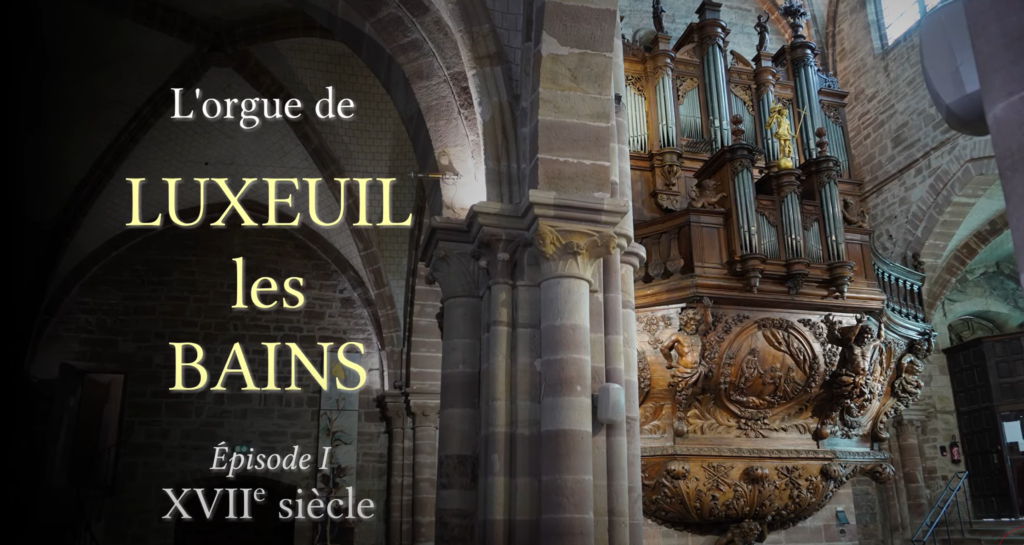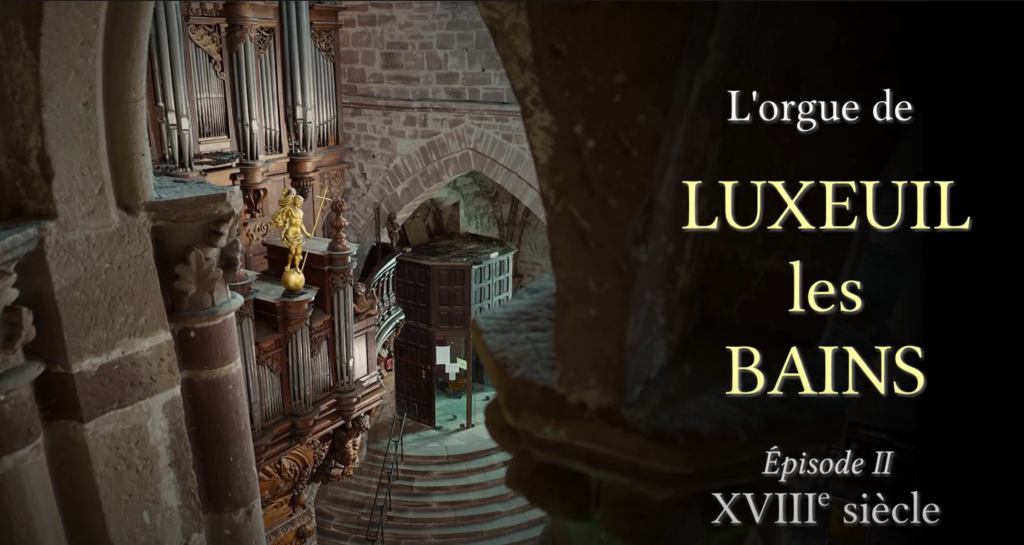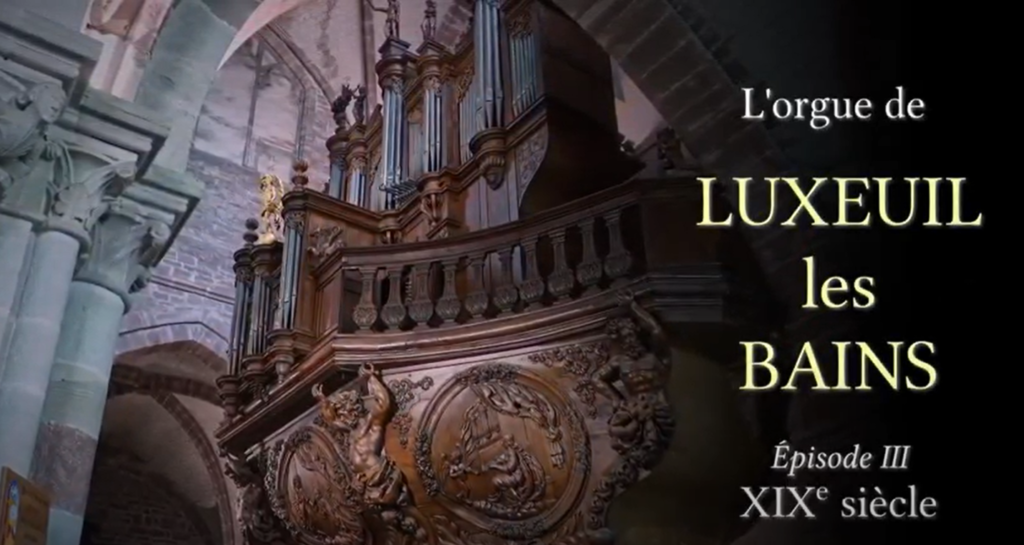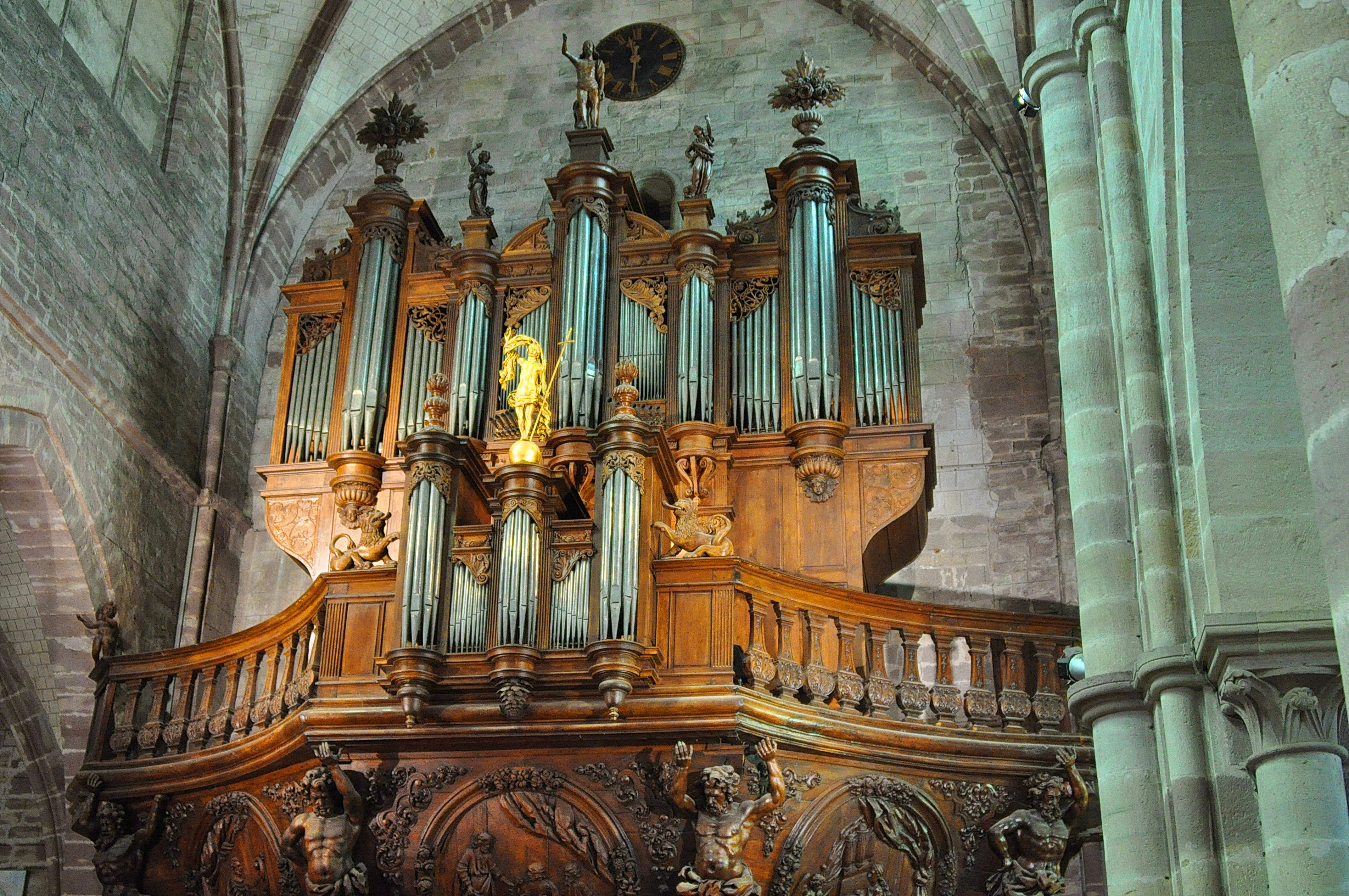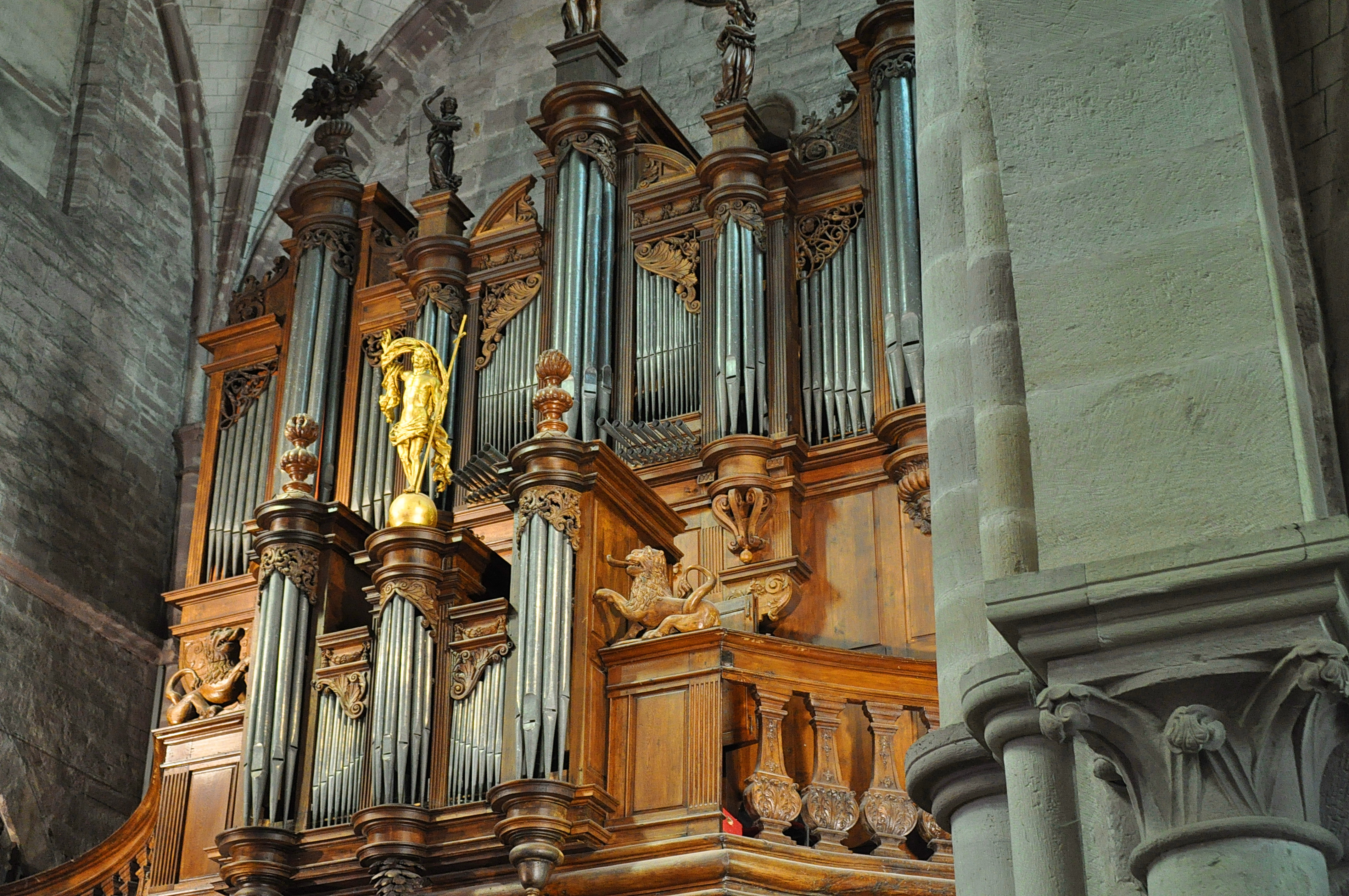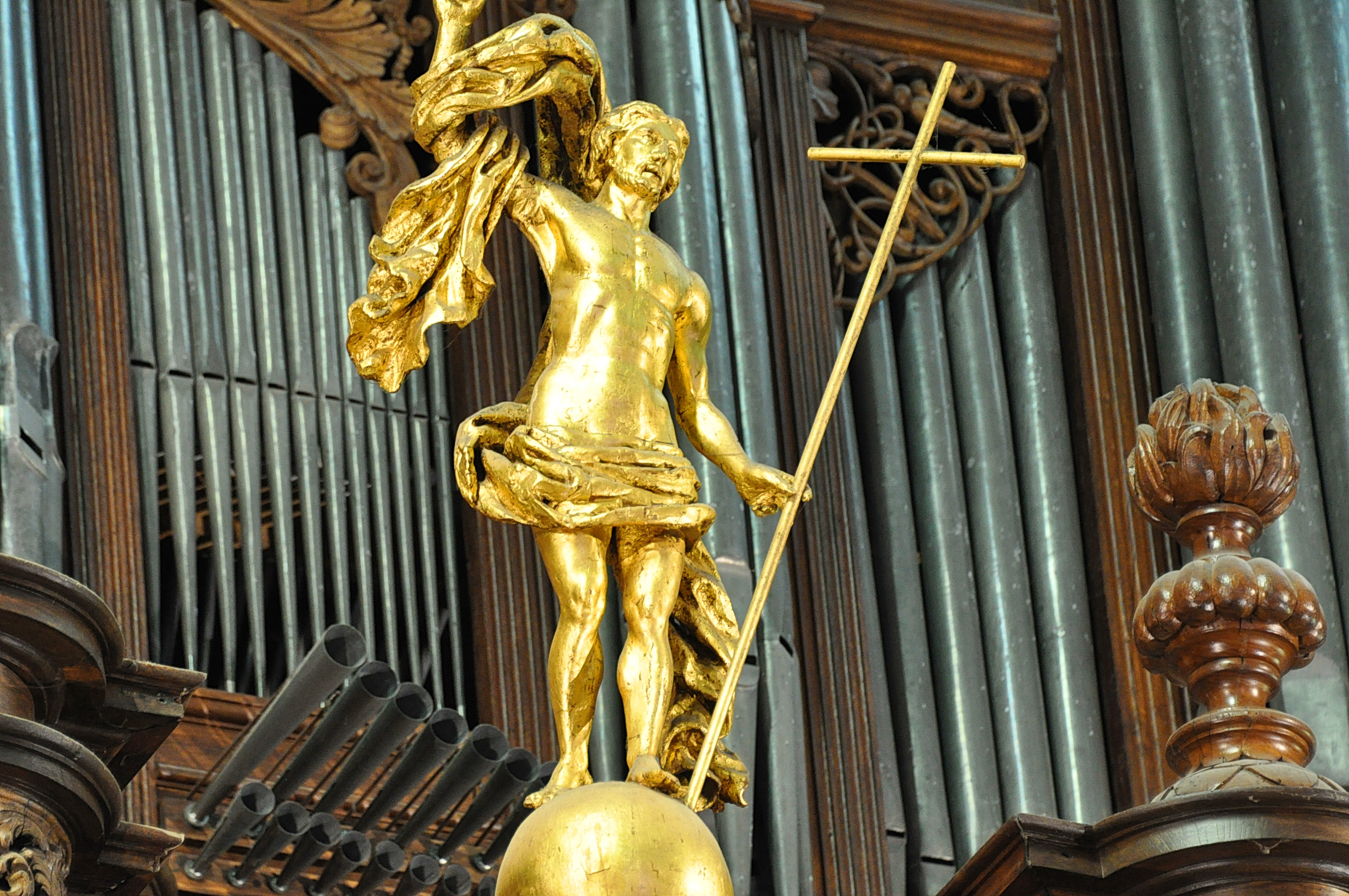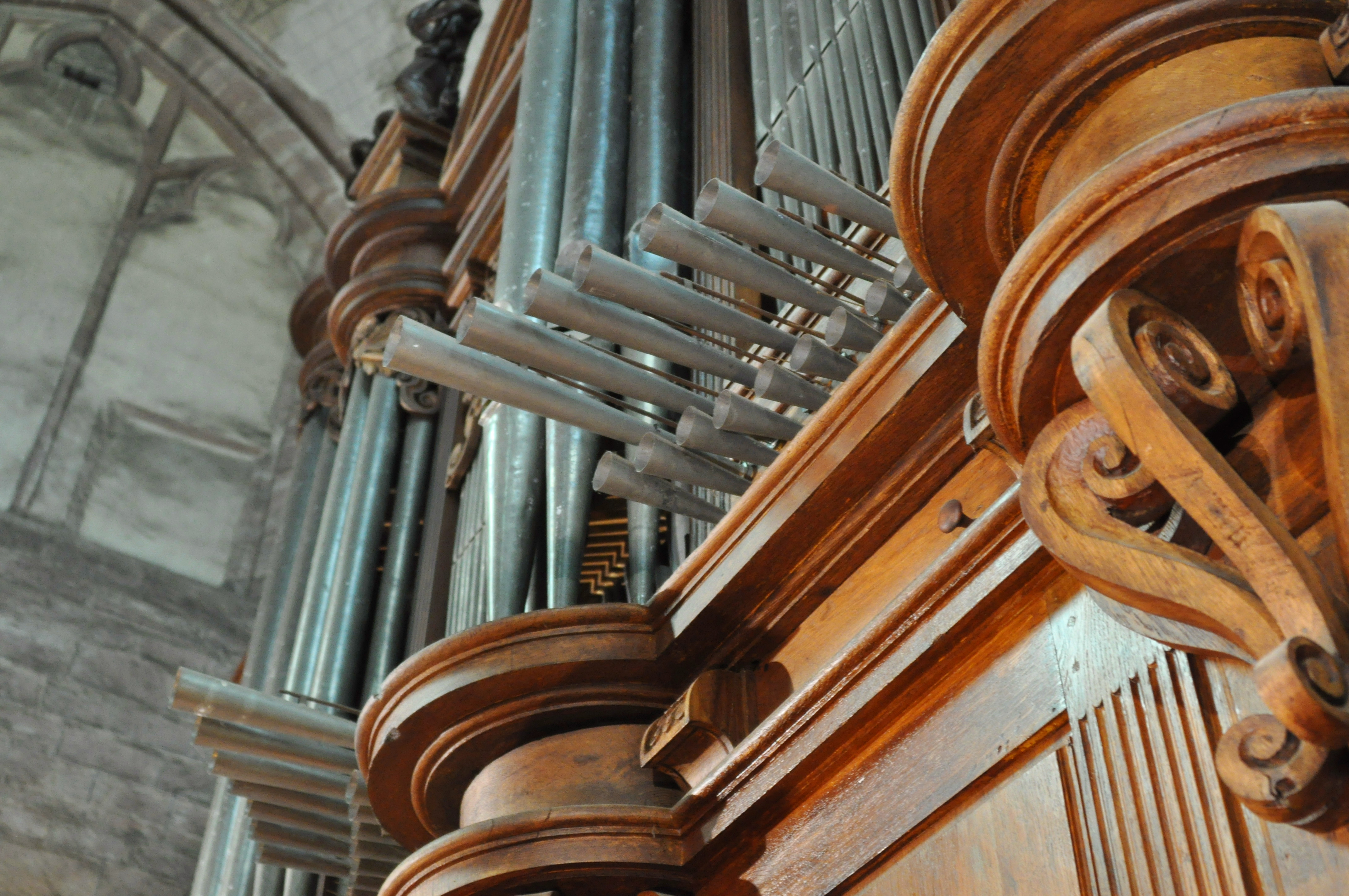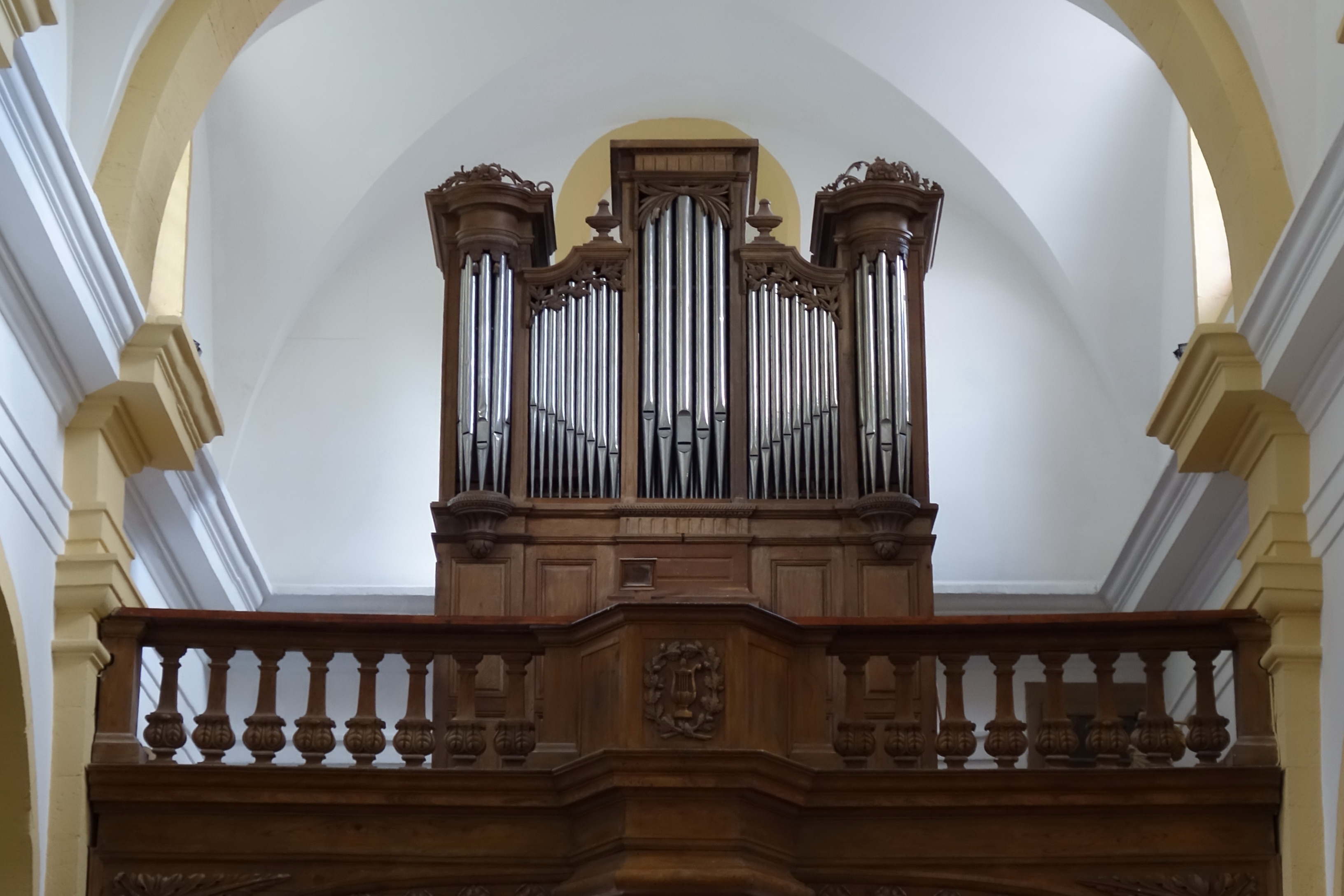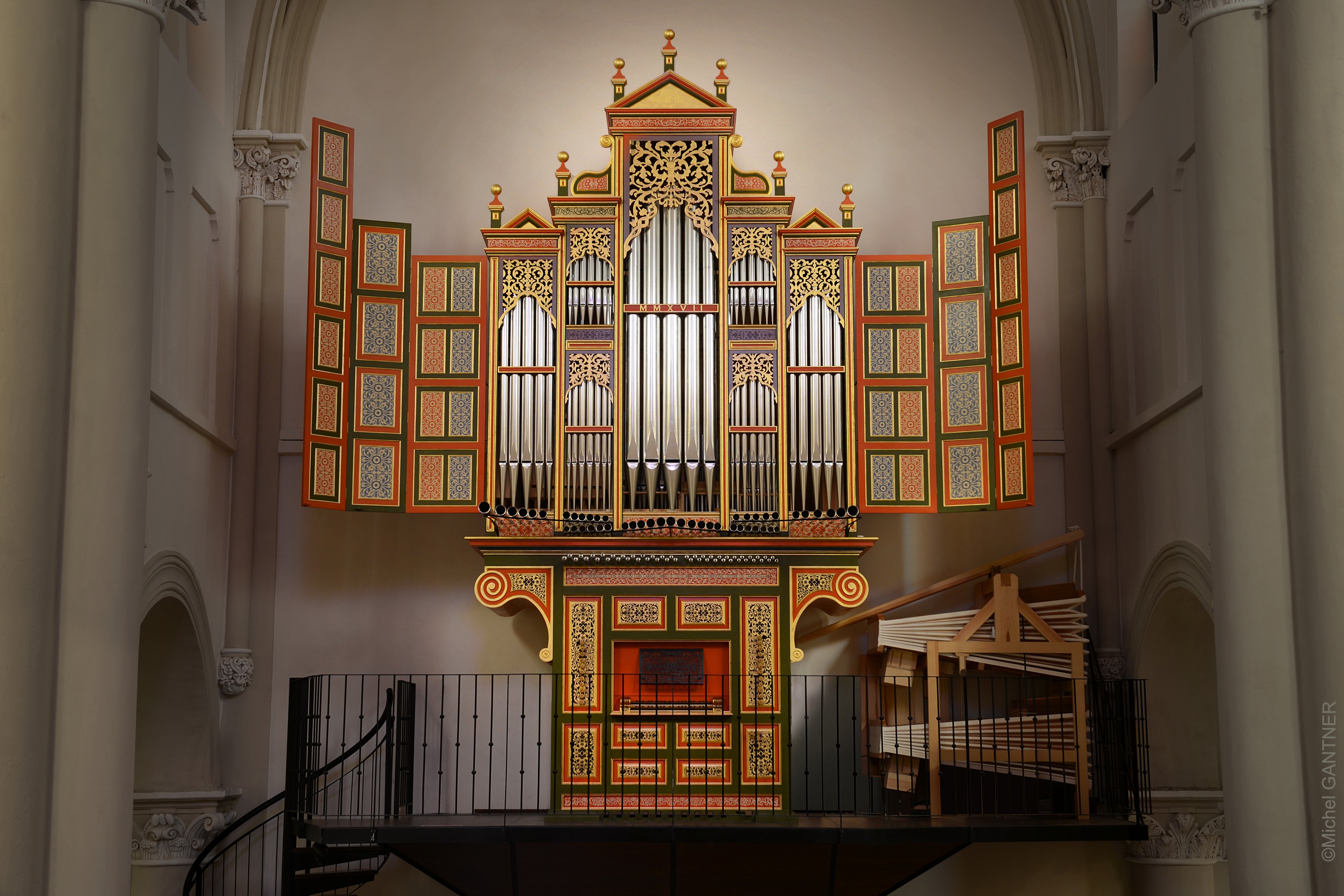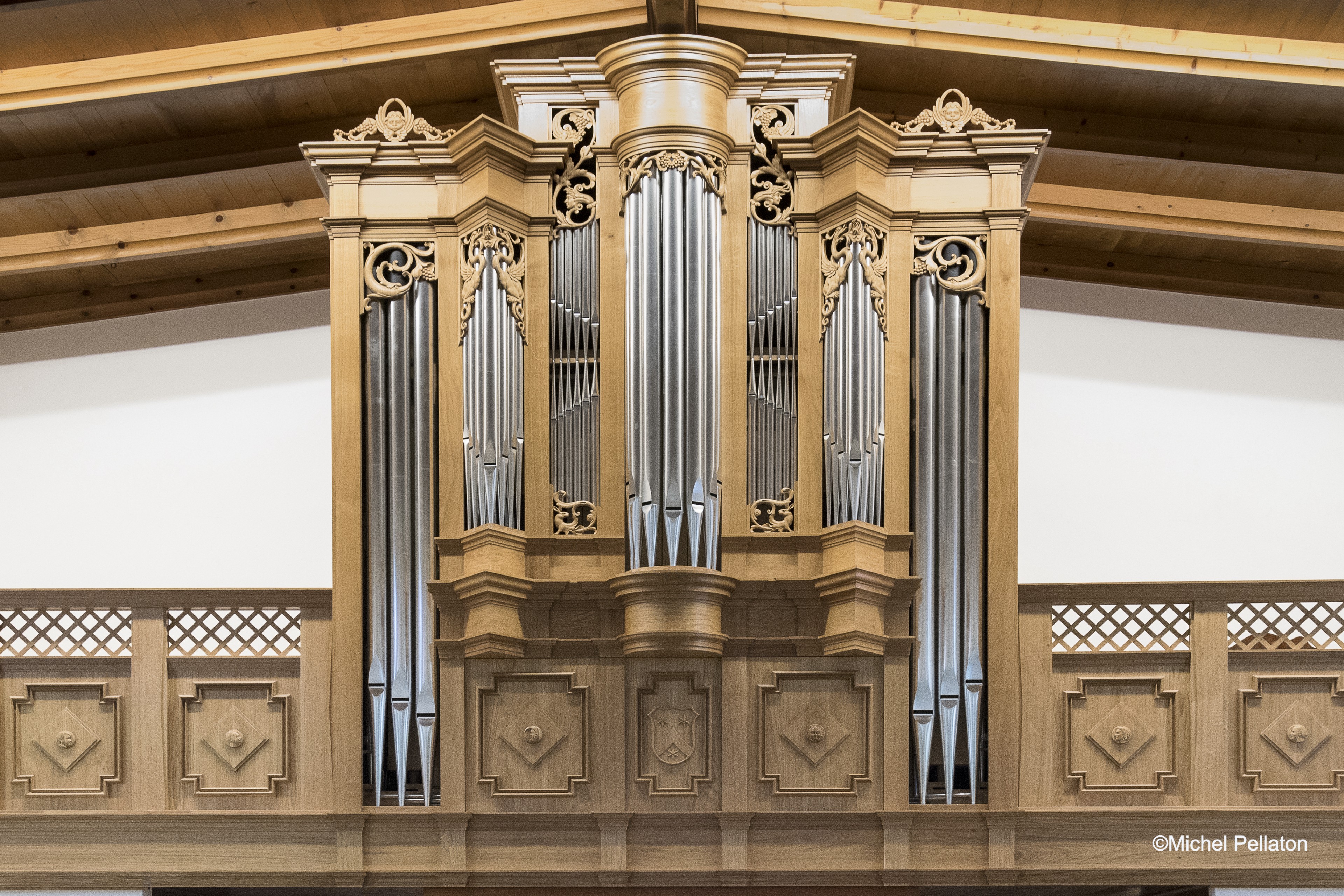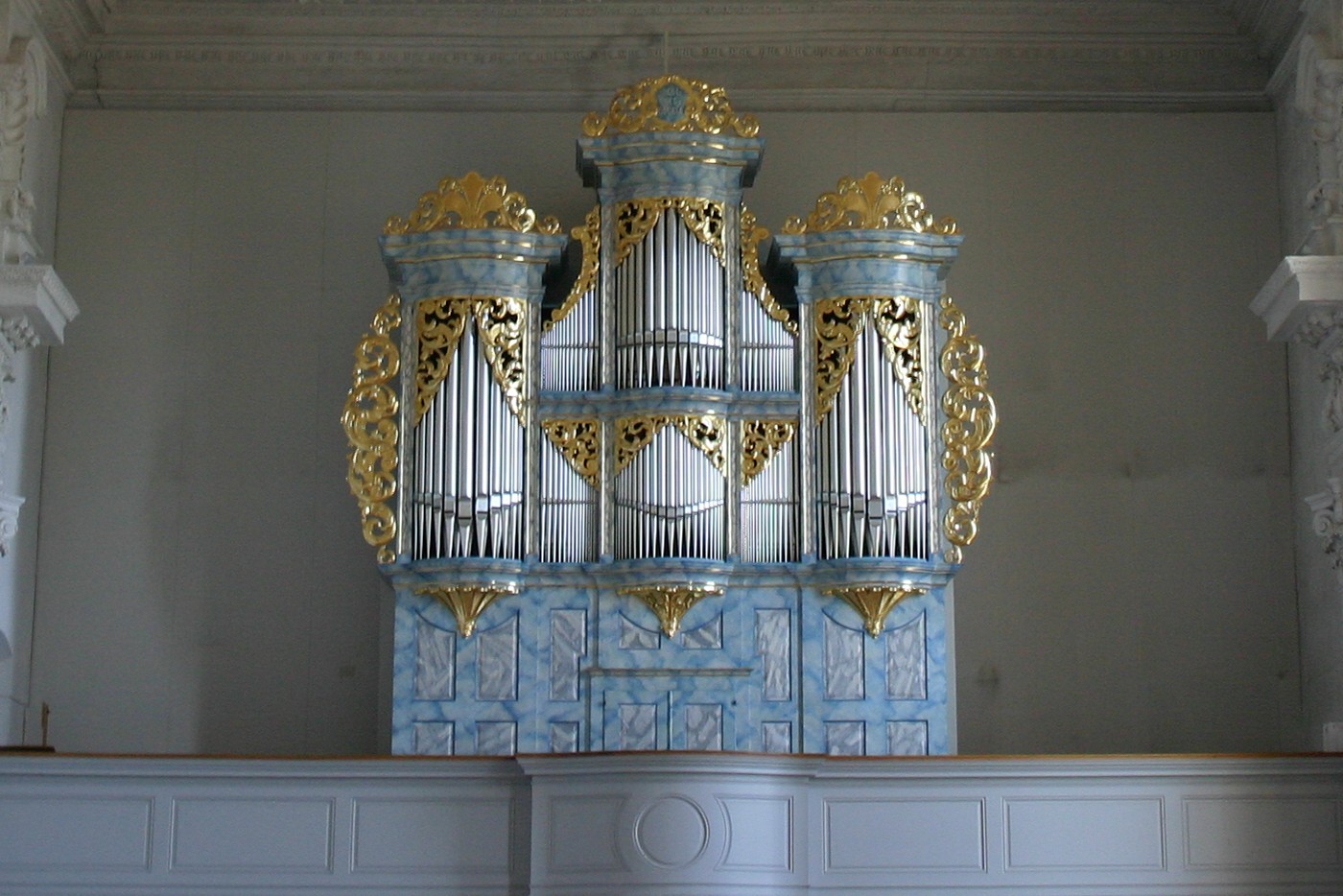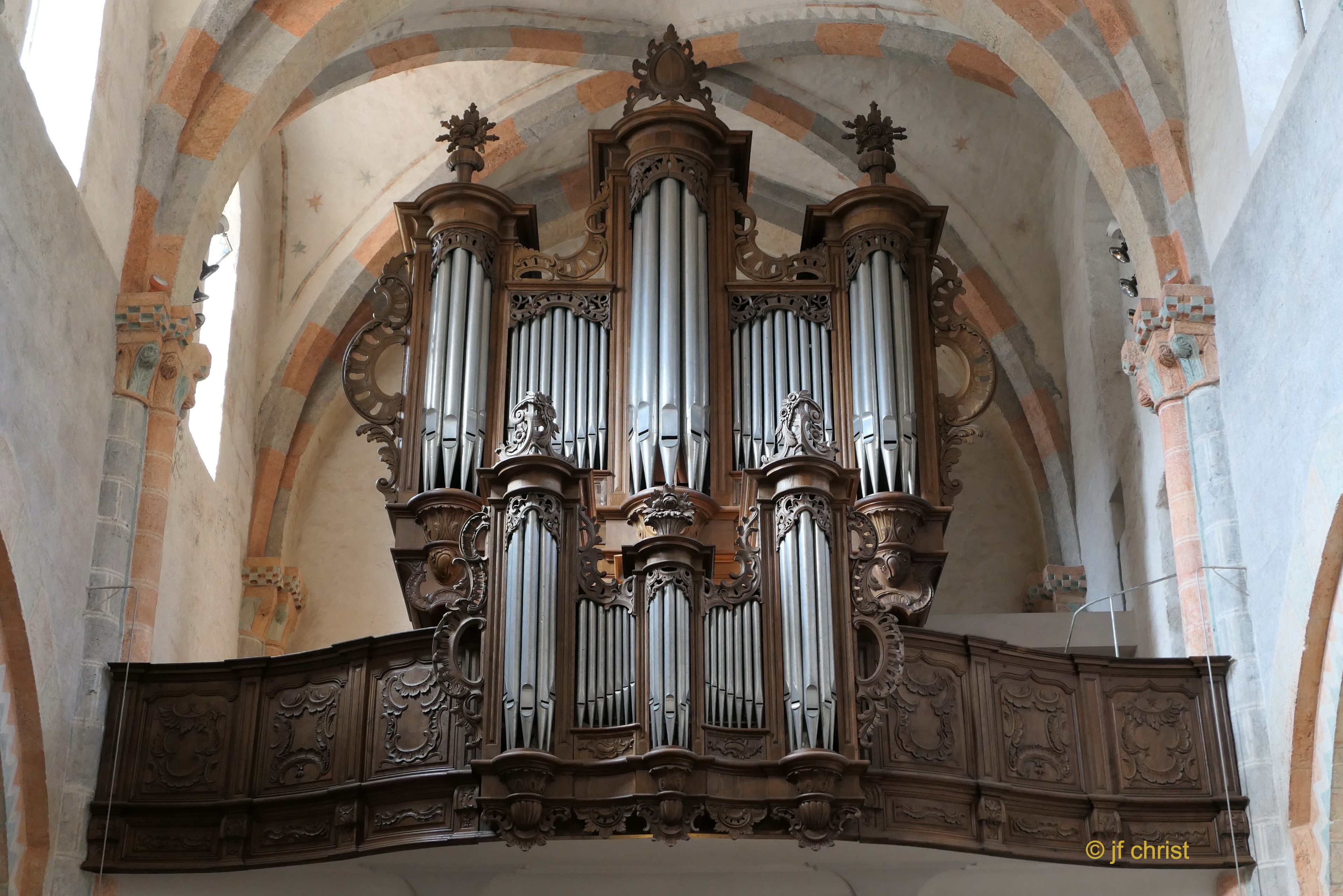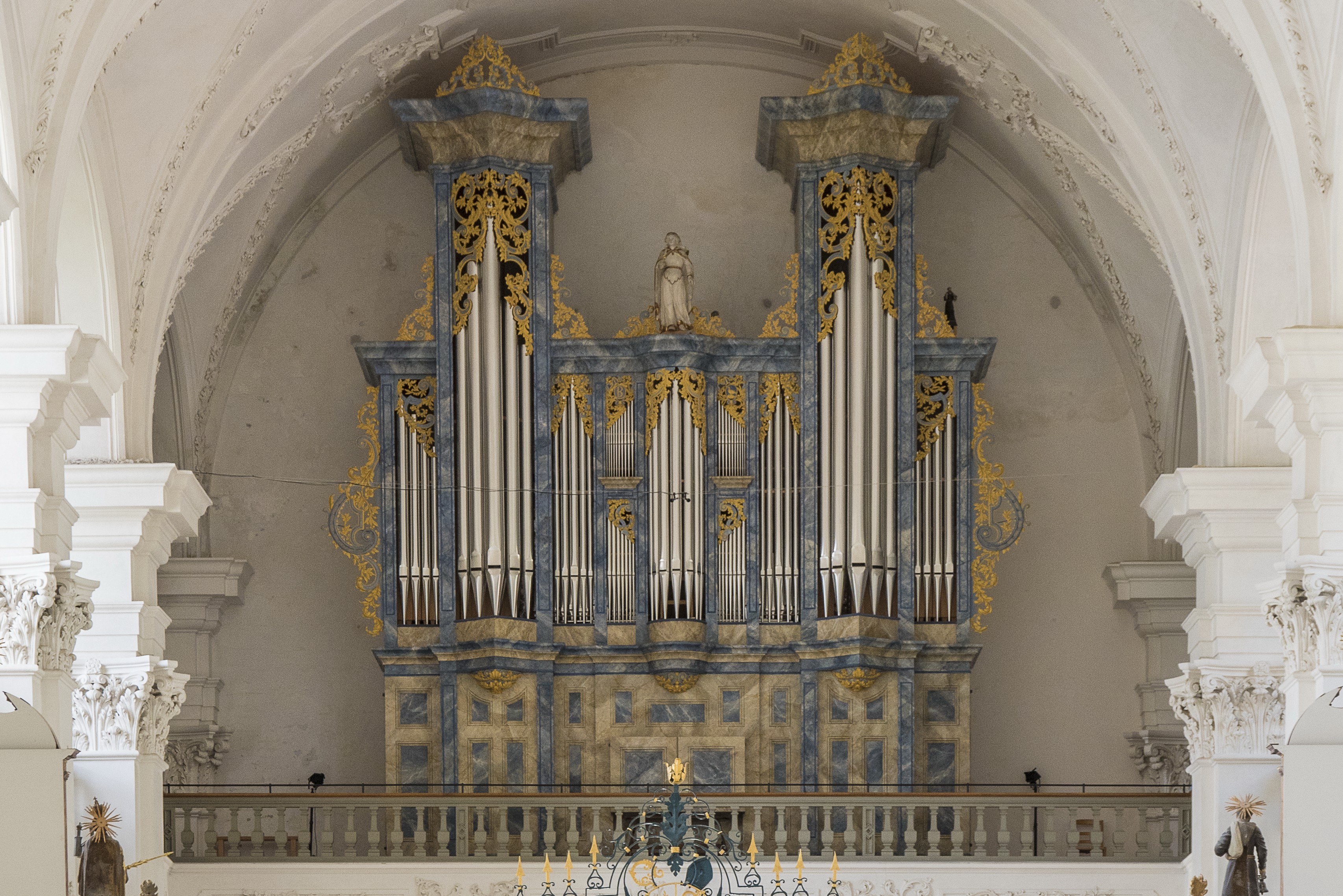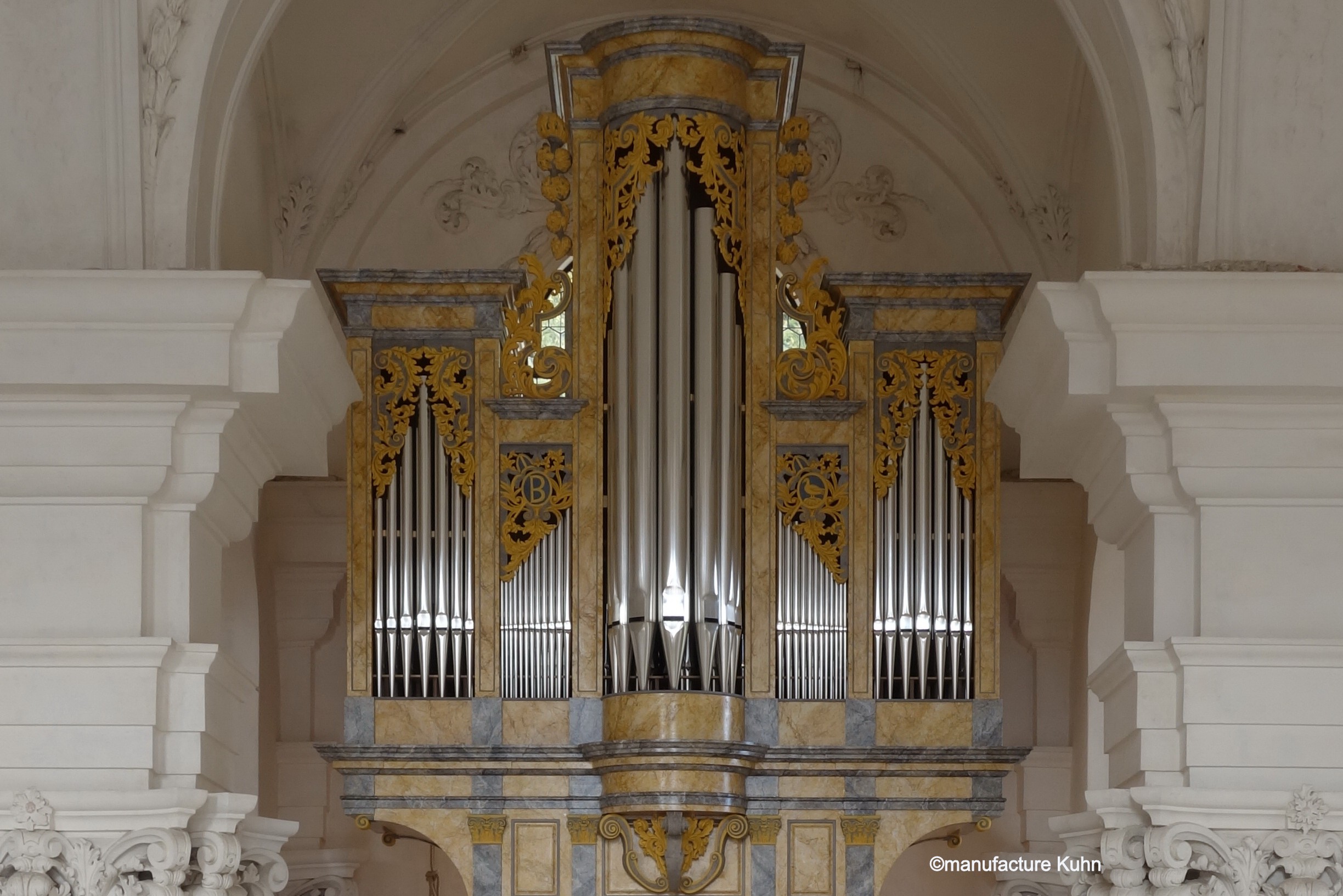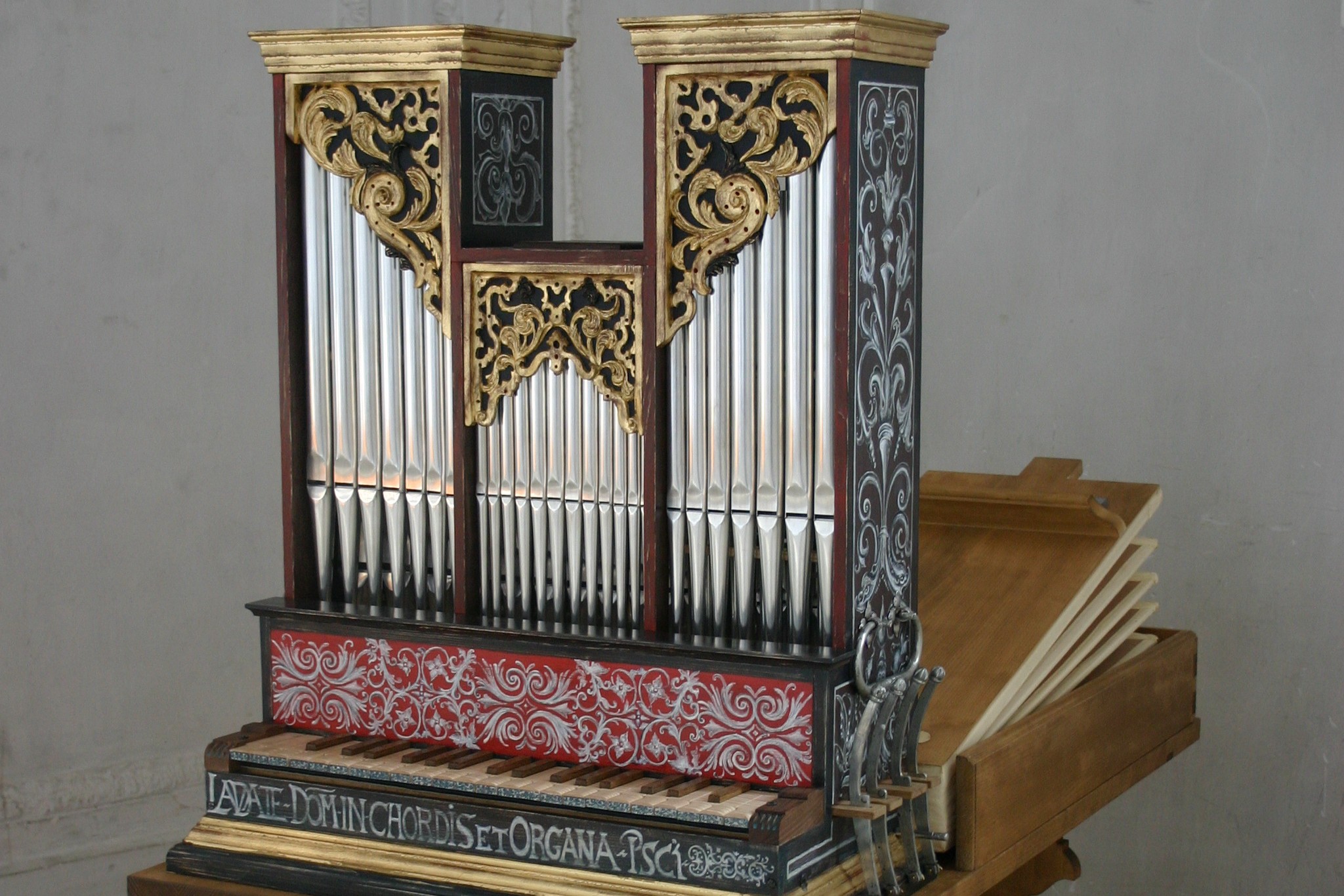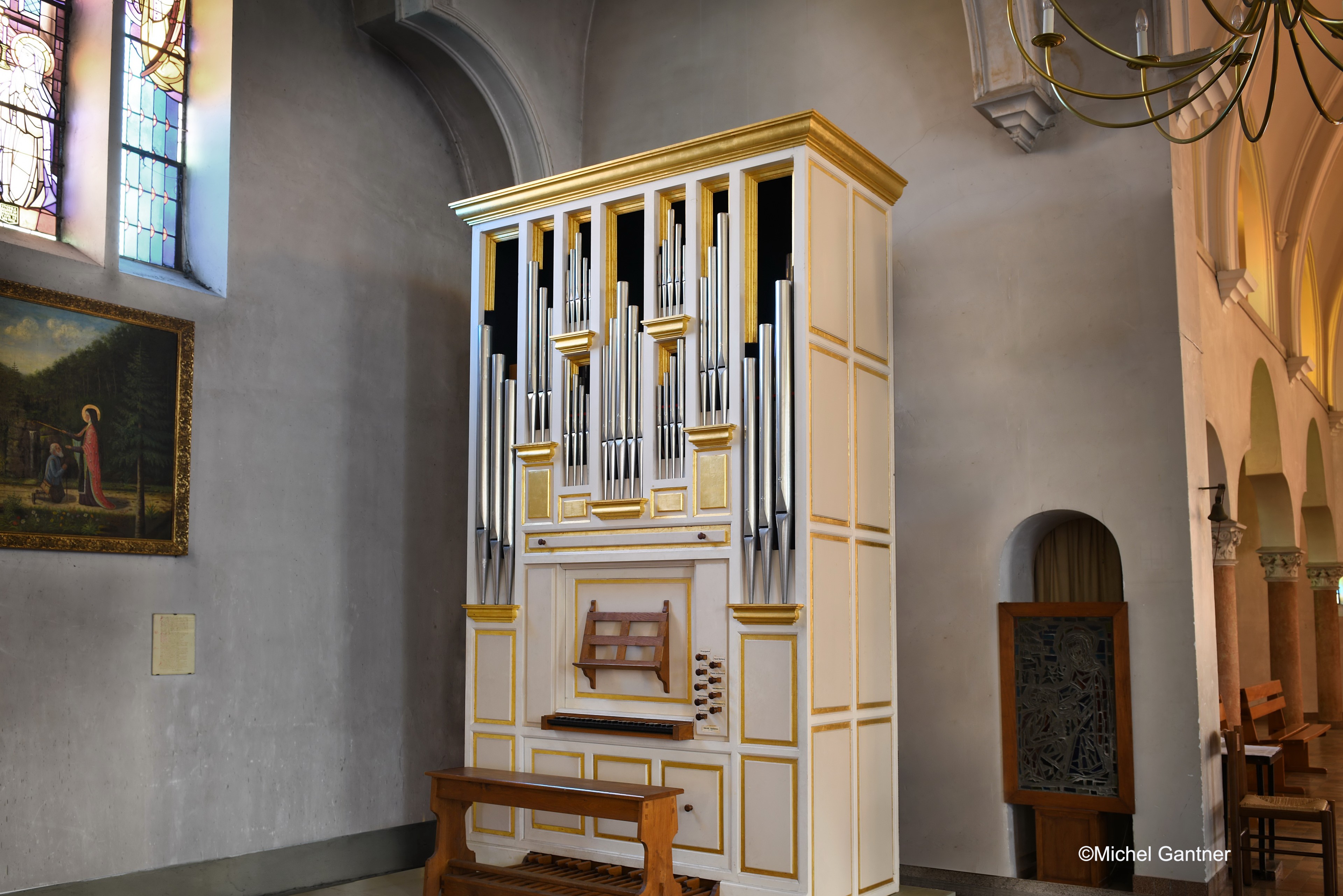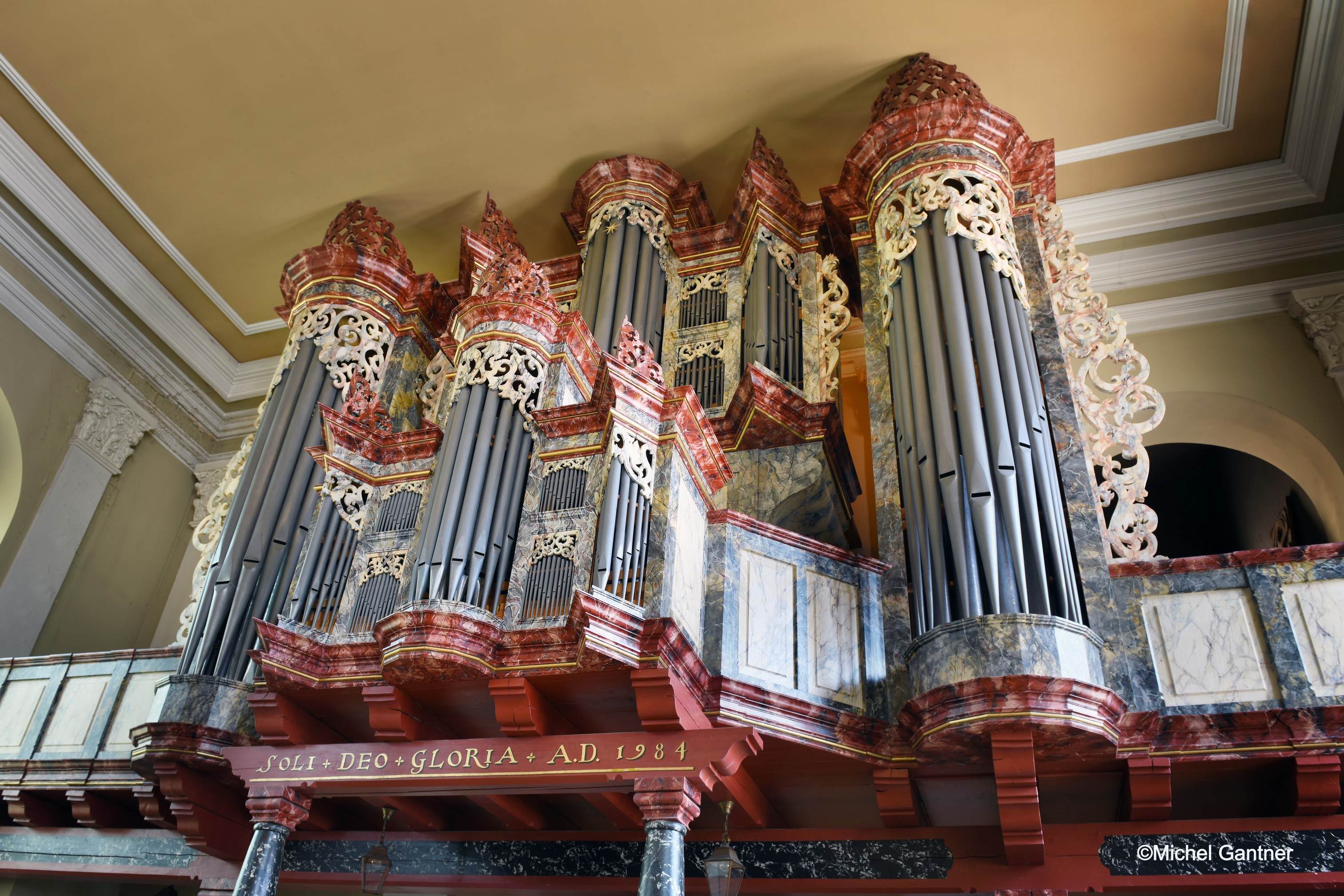French Organ in Luxeuil-les-Bains
French style at St-Pierre et St-Paul basilica - Jean DELOYE, Philippe HARTMANN, Michel FORMENTELLI workshops
Of Flemish origin, with French character , marked by an unfortunate episode and a reconstruction attributed to Jean Deloye and Philippe Hartmann – the historic organ of the Basilica of Saint Peter and Saint Paul in Luxeuil-les-Bains was inaugurated in 2020 after a restoration carried out by Michel Formentelli and Jean Deloye.
It was in 1617, during the abbacy of Antoine de la Baume, that the first layer of the current organ was built. While we do not know the name of the organ-builder, an inscription inside the Positif provides information about the person who made the case: ‘Ioan Dognadec / 1617’.
The case made at that time corresponds to the central part of the
current main body, with three towers, and it had shutters that opened to reveal
the front pipes. According to Claude Aubry, the Positif case had the same
dimensions but at a reduced scale, with the largest tower in the center.
Nothing else known about the original
instrumental. The pipes dating back to 1617 seem to be of Flemish workmanship,
which is plausible considering the close relationship between the Abbey of
Luxeuil and that of Afflighem in Belgium. Additionally, the region of Comté was
under the influence of the Spanish Crown, just as Flanders was at the time.
In 1668, during the reconstruction of the abbey
buildings, the door of the central main entrance was bricked up and the two
side entrances visible today were created. It was to conceal the sealed-up door
that the gigantic wooden pedestal in the form of a lamp base was built between
1668 and 1695, during the abbacy of Charles-Emmanuel de Bauffremont.
This surprising and richly decorated element
consists of two parts: Atlas, who appears to support the entire structure at
ground level, and the long acanthus leaf above him, sculpted from a single tree
trunk.
Various musical instruments, such as a violin,
trumpet, cornet, and recorder, can be seen among the acanthus scrolls.
The highly curved central part is divided into
three panels by four caryatids supporting the balcony with their powerful arms.
Each of the three compartments is finely sculpted with a medallion. On the
right, Saint Cecilia at the organ is accompanied by an angel playing the
violin. In the center, Christ hands the keys of Paradise to Saint Peter, with
Saint Paul standing behind him. On the left, King David plays the harp.
These enlargement works in 1695 were entrusted
to the organ builder Philippe Picard and his sons Antoine and Joseph, with the
aim of rebalancing the proportions of the case in relation to the imposing
balcony. This is when the two side wings of the main body were added. According
to Claude Aubry, who analyzed the joinery before the restoration in 1980, this
enlargement was carried out in two stages: first a flat face and a tower on
each side, with the outer flat face being added later.
It was also during these works that the Positif
case took on its current form, with the two large towers at the ends. The
instrument also seems to have been modified, as Claude Aubry dates some of the
pipework to this period.
Currently, we have no information about the
works carried out in the 18th century. The organ suffered during the French
Revolution: the pipes of the Positif were looted and the bellows were damaged
by hay stored nearby when the building served as a hay store. The sources noted
by Claude Aubry provide information about the instrument after the Revolution:
the Grande-Orgue keyboard extended up to F5, while the Positif keyboard had
only 4 octaves and 7 stops, including the Cromorne, Fourniture, Nazard,
Doublette, and Tierce.
The instrument was restored in 1808 by the organ
builder Jean-Baptiste Gavot. He added a Basson-Hautbois stop to the Positif,
extending its range up to F5 like the Grande-Orgue keyboard. He returned in
1829 to install an Écho keyboard with a five-rank Cornet mixture and a
Trompette mounted horizontally. Jean-Baptiste Gavot’s son carried out a
revision of the instrument in 1835.
Significant works were then undertaken by the
organ builder Joseph Callinet. The records of the Fabrique council mention an
estimate dated October 20, 1840, to which two addenda were attached on January
6 and June 3, 1841, all for a total amount of 4000 francs. The acceptance took
place on July 23, 1841.
Unfortunately, none of these estimates have been
found, and the exact scope of these works is unknown.
The organ case was classified as a Historical
Monument in 1846.
Following a donation from Napoleon III for the
restoration of the abbey church, the organ underwent further works in the
1860s, which Claude Aubry attributes to Claude-Ignace Callinet. It was at this
time that the wall supporting the current balcony was built, and the original
one, which was originally directly attached to the wall, was dovetailed onto
it.
Cleaning and general tuning works were carried
out in 1903 by the Didier company from Épinal.
During World War I, the reconstruction of the
instrument was entrusted to Jules Bossier. Unfortunately, the works were quite
destructive: the back of the main case was torn open, the Positive section was
stripped of its pipework and reduced to its facade, and the built-in console
was replaced with a detached pneumatic one. Pipes painted to resemble stone
were placed outside the case. The Récit and the new Positif divisions were
superimposed very visibly at the back left of the case, as can be seen in the
period photos, as well as the large 16-foot pipes protruding from the ceiling
of the main body. The inauguration of these works took place on Quasimodo
Sunday in 1917.
As the operation of the instrument quickly
became unreliable, works were entrusted to Louis Georgel in 1949, who rebuilt
the bellows and moved the Récit division down into the base of the main body.
In order to accommodate the choir in the balcony, the base of the wings of the
main body was truncated and the carved spandrels were removed. Despite these
works, the organ quickly became unplayable.
Eager to remove the alterations that this
instrument had undergone, the municipality, supported by the organist Michel
Chapuis, launched a restoration project in the early 1970s.
The instrumental part was classified as a
Historical Monument on May 19, 1972. On August 9 of the same year, a
specification was established by Claude Aubry, technical advisor for the
Ministry of Culture. Based on the existing ancient pipework and cases, and
drawing inspiration from the dispositions of Callinet organs, he proposed a
composition of French classical inspiration, but with additions allowing for
the performance of European Baroque repertoire on the basis of five sound
plans, one of which is referred to as ‘Raisonnance’ (sic), inspired by the
Isnard organ of Saint-Maximin (Var).
The works were entrusted to the organ builder
Jean Deloye, assisted by Philippe Hartmann for the voicing.
The entire case was restored, with a significant
portion of reconstruction for the mutilated parts (back and sides of the cases,
spandrels). All the windchests and the suspended mechanical action were also
completely rebuilt. The use of modern materials (metal for the reconstruction
of the structure, industrially manufactured action) was avoided in favor of a
reconstruction following the Rules of the Art as used in the Old Regime (wooden
actions, use of wrought iron…), an exceptional approach for the time. The
bellows were rebuilt using the existing ones with parallel folds, not
wedge-shaped, for economic reasons.
From 2018 to 2020, with the support of the
State, the City entrusted the organ builder Michel Formentelli in collaboration
with Jean Deloye with the complete restoration (removal and cleaning of the
pipework, revision of the windchests and action). The work program included the
installation of four wedge bellows for a better distribution of wind. The
action also benefited from significant improvements. Michel Formentelli ensured
the revoicing in strict accordance with the original work by Philippe Hartmann
and carried out a general tuning.
According to Claude Aubry and Eric Brottier,
technical advisors for the Ministry of Culture.
Sources documentaires
- Sources manuscrites :
Projet de reconstruction du Grand-orgue et plan de charges pour la réalisation, par Claude Aubry, le 9 août 1972
- Sources imprimées :
AUBRY Claude, Luxeuil les Bains, Le Grand-Orgue, 360 d’histoire, pas de date, édité à l’issue des travaux de reconstruction par Jean Deloye
Anonyme, 1617
Philippe Picard, 1695
Jean-Baptiste Gavot, 1808 et 1829
Joseph Callinet, 1841
Claude-Ignace Callinet, vers 1860
Jean Deloye et Philippe Hartmann, 1980 (reconstruction)
Relevage Jean Deloye et Michel Formentelli, 2020
videos
